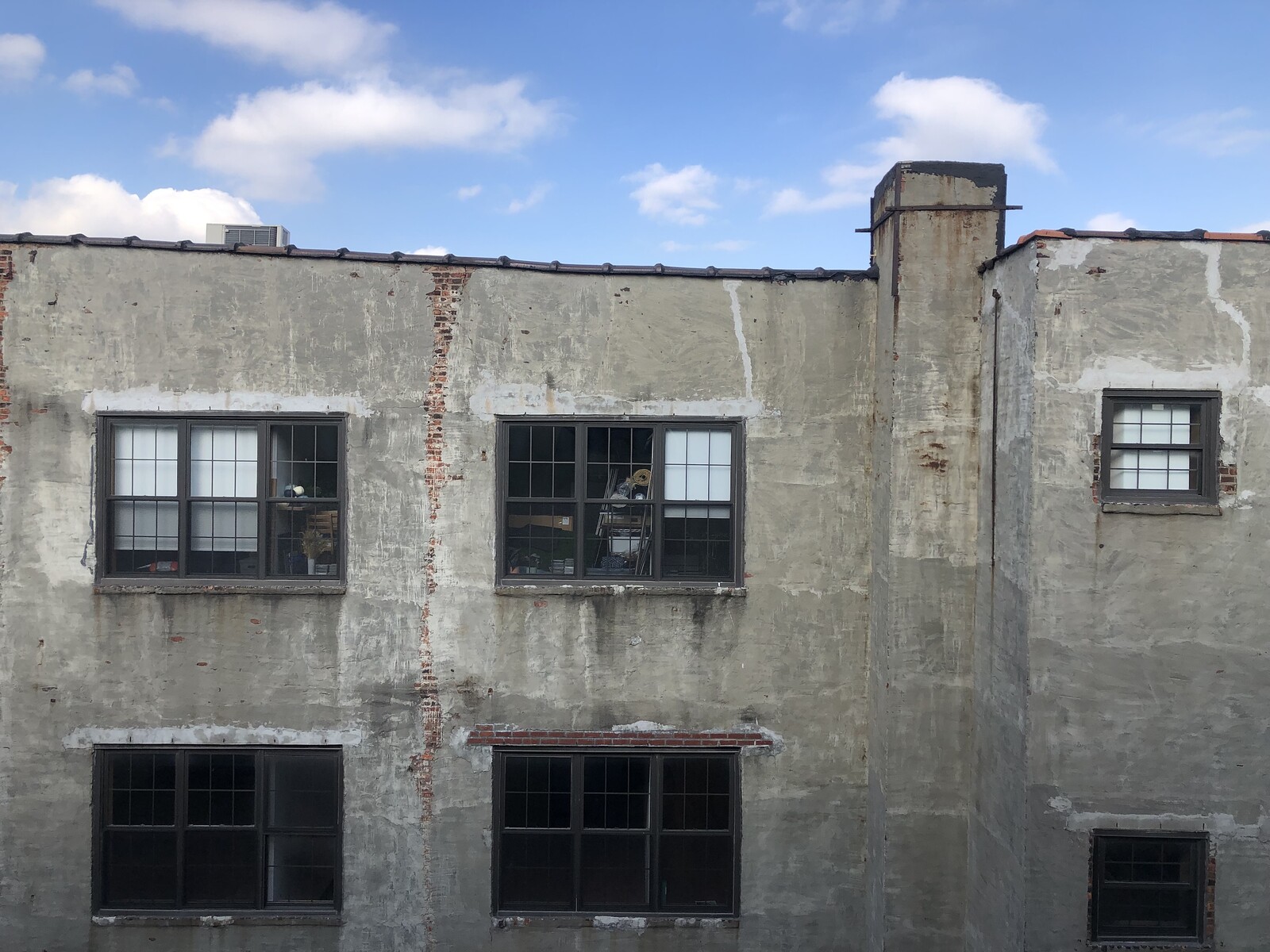The photograph accompanying this month’s letter comes from the New York studio of the painter Amy Sillman. In the course of our correspondence, during which we discussed the nature of the brief and considered the relative merits of different views, Amy mentioned that she has always associated elements of New York painting with the “glum and ugly and shabby and tattered” surfaces of the city’s buildings and sidewalks. When the above picture arrived we suggested that—in its off-geometric composition, its scratched plasterwork and exposed layers—it communicates some of the relationship between the world and the work that this series of snapshots from artists’ workspaces hopes to foreground.
Shortly afterwards, Amy forwarded a photograph of a drawing she was working on. It was apparent to her that this image—with its cracked and distressed surfaces and scratched, brick-colored patches—is “so obviously that same wall.” In one sense, the drawing reinforces the basic proposition that the environment in which an artist lives influences, whether consciously or unconsciously, the work that they make. And, by extension, that some knowledge of those conditions might help the viewer of their work to understand it. Yet in another sense, this drawing of entangled figures against a smog-gray ground sets clear limits on the same proposition, because there is a lot more going on in it than we have space here to discuss. For all that the rough textures of the built landscape might be one factor in the execution of this work, it would be absurd to say that they determine it.
Which is a long way of saying that the work does not reproduce the world but transforms it, and that this process works both ways. The window might here be understood as one crack through which the city slips into an artist’s consciousness, to mingle alongside whatever they have recently been looking at, reading about, talking over, dwelling upon. Indeed, criticism might be understood as the study of these cracks and joins, the places at which public information—whether the colors of a built landscape or the shape of ideas shared online—is transmuted into new forms. Attending to those places at which public meets private not only gives viewers a new way of entering the work but also, through that peculiar feedback between art and the world, encourages them to see with fresh eyes what surrounds them every day.
Some of our programming for the coming year is trained explicitly on these points of access. Last month we introduced a year-long series of reviews, essays, and conversations focused on the exchanges between art and ecology. We also published a piece which considered the new aesthetics, organizations, and ideologies springing up around art being produced online and accessed through screens, another (increasingly dominant) window on a world. This month we experiment with some different forms of criticism, including a dialogue on the subject of a dialogue and a discursive response by an historian of science to an artist reimagining what we mean by life and consciousness. The ways into a work of art are numerous, and not all of them are accessible to every viewer. The critic’s role is to suggest some new ones, and to encourage the reader to find their own.
